Introduction
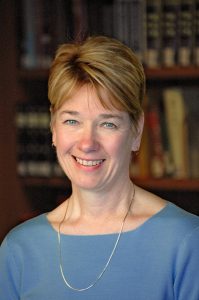
By Deborah Jakubs, Rita DiGiallonardo Holloway University Librarian and Vice Provost for Library Affairs
This year marks the twenty-fifth anniversary of the Libraries’ International and Area Studies department (IAS). It’s an anniversary that has special meaning for me, since I was there at the start.
In 1991, I was the head of Collection Development and the Librarian for Latin America and Iberia. Research and teaching at Duke were starting to take a more international turn, and I conceived of IAS as our response to the university’s deliberate internationalization. I wanted to bring together and make more visible a group of librarians with specialized language skills and deep knowledge of world regions.
When I started working at Duke, more than thirty years ago, the books and journals in the library weren’t selected by librarians themselves, but by faculty library representatives. The system we have today of dedicated librarians who order materials and specialize in certain subjects or world regions came about gradually through the late 1980s and 1990s. IAS was part of that transition.
Duke has long had extensive library collections from around the world, with special strengths in Western Europe, Latin America, Slavic Studies and, related to the university’s longstanding focus on Commonwealth Studies, South Asia. In recent years, collection growth has been especially rapid in East Asian, Middle East, Jewish and African Studies, and the IAS team has played a key role in this development. Like other librarians at Duke, they have moved well beyond collection building and developed skills with digital tools, data management, publishing, and other areas. IAS librarians are highly valued partners with faculty doing global research, teaching, and digital projects.
For this special anniversary, we asked each librarian in IAS to share a little about their work—whether it’s a recent project, a class they worked with, or something about the collections they find particularly interesting. What follows are brief snapshots of the individuals who make up this cosmopolitan corner of the library. Taken together, they convey the wide range of ways our librarians support Duke’s global teaching, research, and outreach.
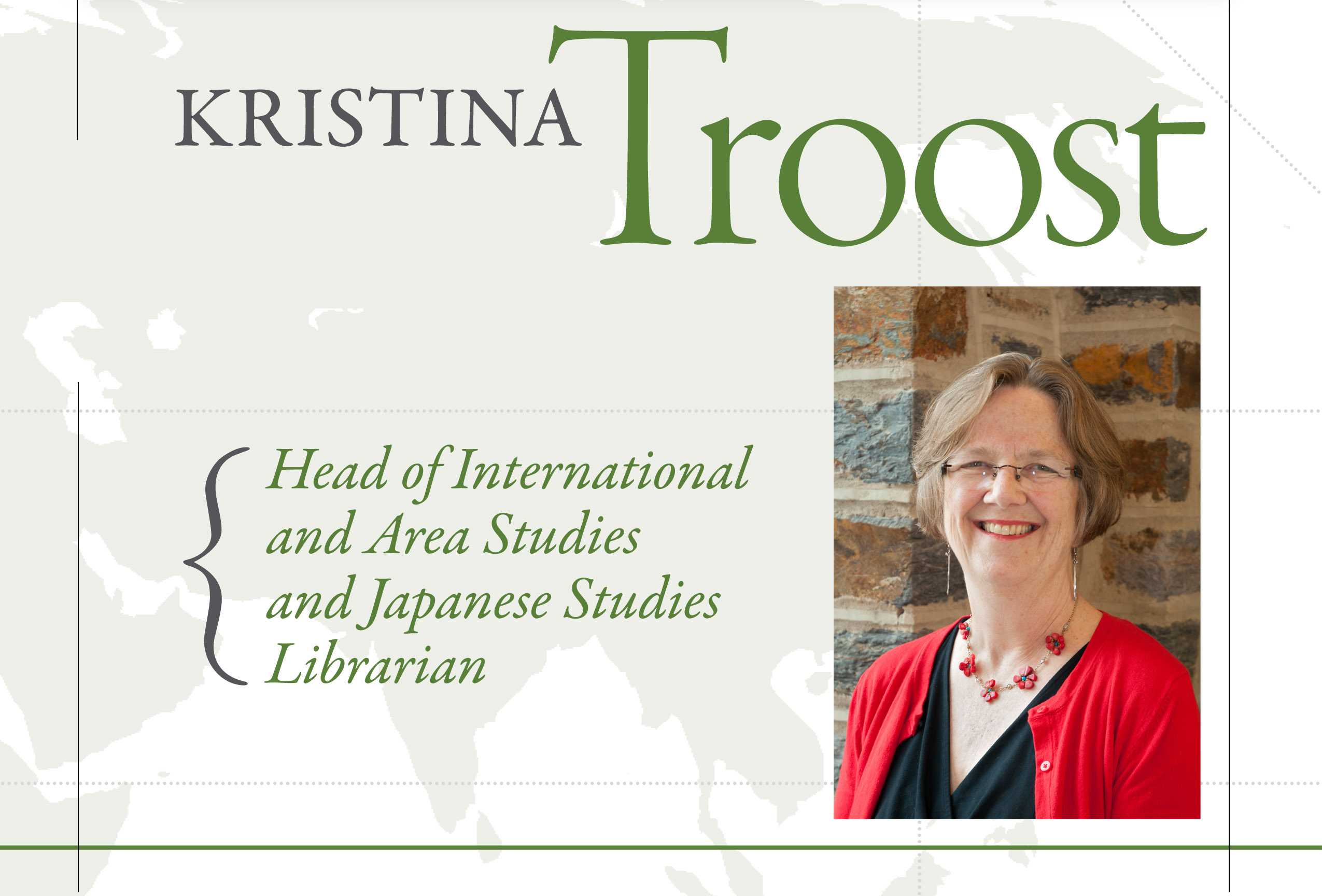
In addition to her roles as the head of IAS and the Japanese Studies librarian, Kris Troost is the Director of Graduate Studies for the master’s program in East Asian Studies, which is run by the Asian/Pacific Studies Institute at Duke. The program provides training in the languages and cultures of China, Japan, and Korea for students wishing to pursue careers in government, law, and the media, or a Ph.D. in the humanities or social sciences. Kris has been involved since the program’s creation, serving on twenty-six masters’ committees, chairing three, and serving as Director of Graduate Studies since 2008.
In this capacity, Kris coordinates the review of applications and admissions. Between eight and ten students are admitted each year. Once they arrive, Kris meets with them as they make decisions about courses and capstones. She also makes sure that the library is involved in their orientation and is responsive to their needs.
Serving as Director of Graduate Studies has had many valuable synergies with Kris’s job as a librarian. The joint responsibility allows her to bring detailed knowledge of the program together with her role as a librarian, and to integrate student interests with materials and the means to develop those interests. And just as the students benefit, Kris gains energy from working with them.
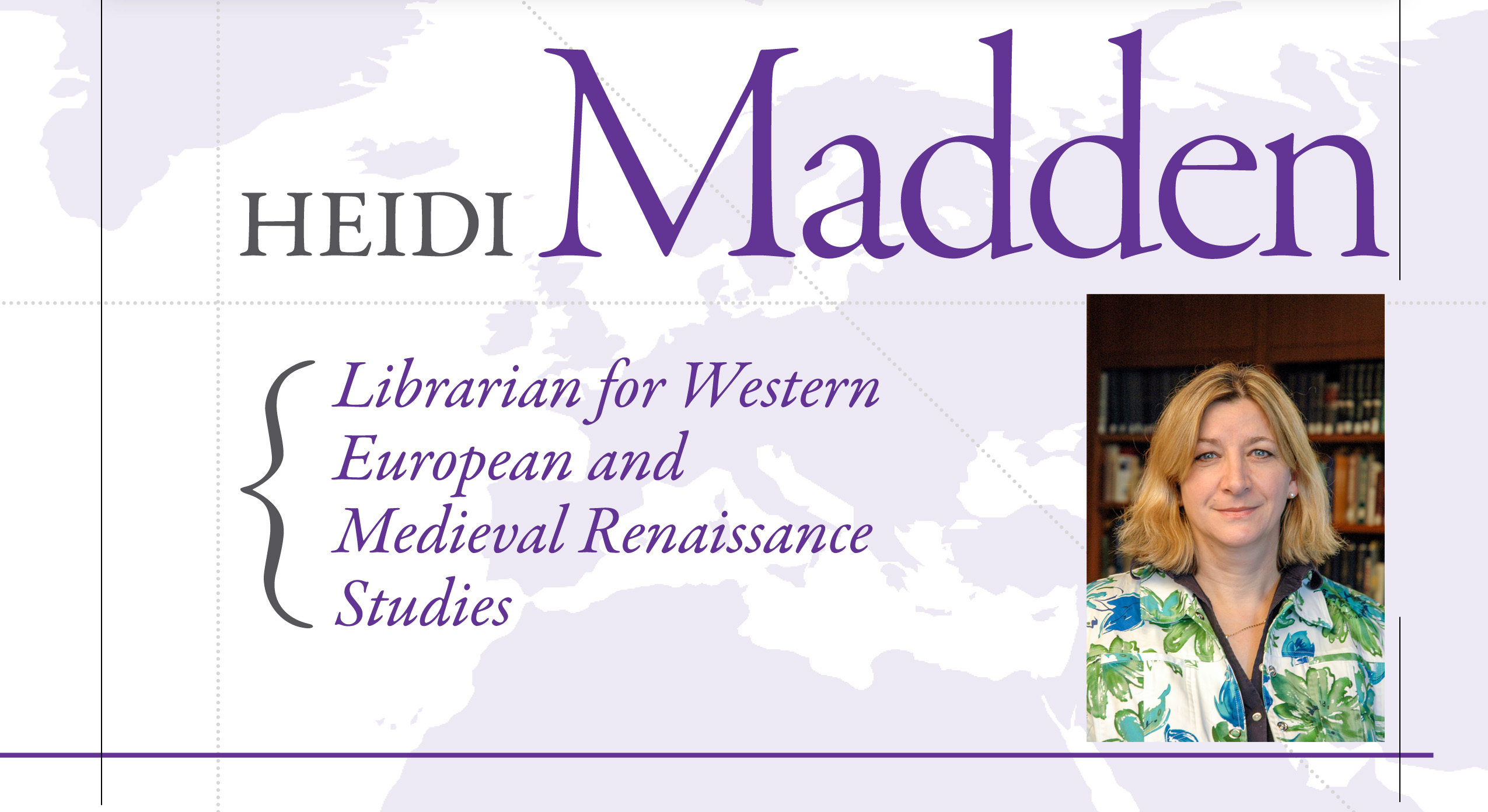
One of the primary goals of the humanities at Duke is to facilitate original research by students. In order to do that, students need to be able to move beyond secondary sources and interact with primary material, to put their hands on the actual historical sources.
Heidi Madden is devoted to forming connections that will allow this type of original research to happen—connections within the department, between students and the Libraries, and with international research institutions. It all begins in the ubiquitous Writing 101 class.
Heidi, who is also an adjunct assistant professor in the Department of German Studies, recently co-taught a Writing 101 course titled “Images that Shock: Obscenity from the Middle Ages to the Present.” Along with Professor Ann Marie Rasmussen, she worked to introduce first-year students to the world of research through a uniquely fun and unexpected historic oddity—medieval badges. The badges are small metal disks emblazoned with vivid, often sexually themed images that were made and worn during the Middle Ages. Each student was instructed to research a single badge for the final paper, and in the process dive into the world of academic research.
Teaching the class put Heidi on the front lines of the first-year research experience, and allowed her to form relationships with students, ensuring that she is better able to help them in the future.
But these relationships are only the beginning of her work. Through her involvement with the International Relations Committee of the American Library Association, Heidi actively fosters a relationship with German libraries via a library exchange program. Not only does this program allow a flow of ideas between libraries in both countries, it also brings Heidi closer to the materials and resources in Germany. So when an honors thesis undergraduate is looking to do primary source research in Germany or other European countries, Heidi is already familiar with the institutions there and can help the student find exactly what they need.
It is these sorts of relationships—both on the small, personal level and on the large, institutional level—that foster a creative and ambitious atmosphere which make the Duke Libraries and the university as a whole a special place.

Several years ago, KJ Hunt attended a graduation party thrown by the African and African American Studies department. Looking around, she realized she didn’t know many of the graduating students, students who had spent four years studying in the department. She was determined to change that.
Many Duke classes are assigned a subject librarian, but KJ decided to take it a step further. She approached faculty from the department about the possibility of sitting in on their courses so that she could really engage with the students and the class. They agreed and a new relationship (the AAAS course librarian) was born.
Since then, she has kept participating in classes, often attending several each semester. Sitting in on a class gives KJ the opportunity to see exactly how the professor approaches the course material, which allows her to create tailored research guides specific to the class and the professor. When students need help with a research paper, KJ knows exactly what has been discussed in class. Instead of having to make the student explain the background behind their research projects, she already has a sense of the course’s emphasis and the professor’s expectations. Most importantly, she becomes a familiar face, a person students know and connect with.
KJ makes a point of sitting in on introductory classes as well as higher-level lectures so that she is introduced to students from the very beginning. Her work has not gone unnoticed by students—in 2014 she was nominated and won a Julian Abele award (Mentor of the Year) in recognition of her devoted work for the student population. It’s safe to say that when this year’s seniors graduate from the African and African American Studies department, they will all know KJ.

As the Librarian for Latin American, Iberian, and Latino Studies, Holly Ackerman works in a vast and diverse field, but one of her particular research focuses is more specific. As part of her work as a librarian scholar, Holly has done in-depth research on migration in the Caribbean and the many experiences of migrants—when people from countries like Cuba, Haiti, and the Dominican Republic move to and from other Caribbean countries and perhaps eventually come to the U.S.
Recently, however, she has expanded her focus to consider parallel cases of migration in the Mediterranean. Migrants in the Mediterranean often move from Libya and Tunisia up to Italy and Malta and from Morocco into Spain. Though extensive research has been done on migration both in the Caribbean and in the Mediterranean, no one has yet compared the situations. This coming summer, Holly will be visiting refugee camps in Italy and Malta to begin this research. Though she received a research grant before current events unfolded, the refugee crisis in Europe makes her research all the more timely and crucial. She focuses her research on people—seeking to learn about their motivations and experiences, what sort of relationships they formed, and what type of reception they received. Using this information, she can begin to explore how all these small-scale factors influence policies and decisions at the national and international level.
Ultimately, Holly hopes that her research will help to facilitate humanitarian aid and policy changes that benefit and protect the migrants of the world.

Sean is new to Duke, having come from McGill University after the recent retirement of our longtime Middle East and Islamic Studies Librarian, Christof Galli. He has traveled extensively in the Middle East, having studied Arabic in Tunisia, Syria, and Oman. One of his academic interests is the history of manuscripts and printing in the Middle East.
Over the past decade, Duke’s Middle East collection has grown significantly and broadened in scope. The expansion has been driven by shifts in Middle East scholarship under the influence of theoretical developments, curricular innovations, and political and social developments in the region. As Duke has grown into a dynamic center for Middle Eastern studies, so has the library collection grown with it.
The events that have become known as the Arab Spring and their aftermath are just the latest geopolitical tremors originating in the Middle East which have spawned new threads of scholarly and curricular activities for which library collections are an integral building block.
The Middle East collection now includes extensive holdings on Islam and its historical development, both classical and modern; contemporary literature and visual arts; social and economic issues; and the study of Middle East history.
Buying trips to the Middle East have added rich holdings of newly published material as well as coveted “gray” literature. These include popular literature and works on street art, cartoons, comics, and other ephemera with graphic content, as well as publications by non-governmental organizations and social movements. Another recent collection highlight is the addition of a trove of late Ottoman periodicals and two hundred Ottoman monographs which Duke digitized and made available on the Internet Archive.

As a subject specialist for Judaica and Hebraica, Rachel collects materials from and about Israel as well as many other parts of the world, in Hebrew and in other languages. She serves as a liaison to the Center for Jewish Studies at Duke and provides specialized reference assistance, research consultations, and instruction to library users.
Among her other duties, Rachel has found a passion for developing and curating exhibits. Her first project was an exhibition entitled “Illustrating the Hebrew Bible,” which was composed of a collection of illustrated religious texts. The illustrations were not mere depictions of biblical figures, scenes and stories, but works of art in and of themselves, each celebrating and sharing a rich tradition of Jewish creativity and skill.
As she selected and curated the exhibition materials, Rachel learned to develop a thesis for the exhibit—a story or a statement that it seeks to share with the viewer. Every piece included in the display is a line of this story, embellishing and elaborating on the central message.
For Rachel, part of the appeal of crafting exhibits is the chance to share extraordinary materials with the public. Books and documents are freed from the quiet of the stacks and opened to the gaze of passersby. Rachel has worked on several exhibits since her first experience, including one showcasing children’s books from the 1950s, which offered an irresistible glimpse back into the culture and views of the past, and, most recently, an exhibit celebrating the twenty-fifth anniversary of IAS.
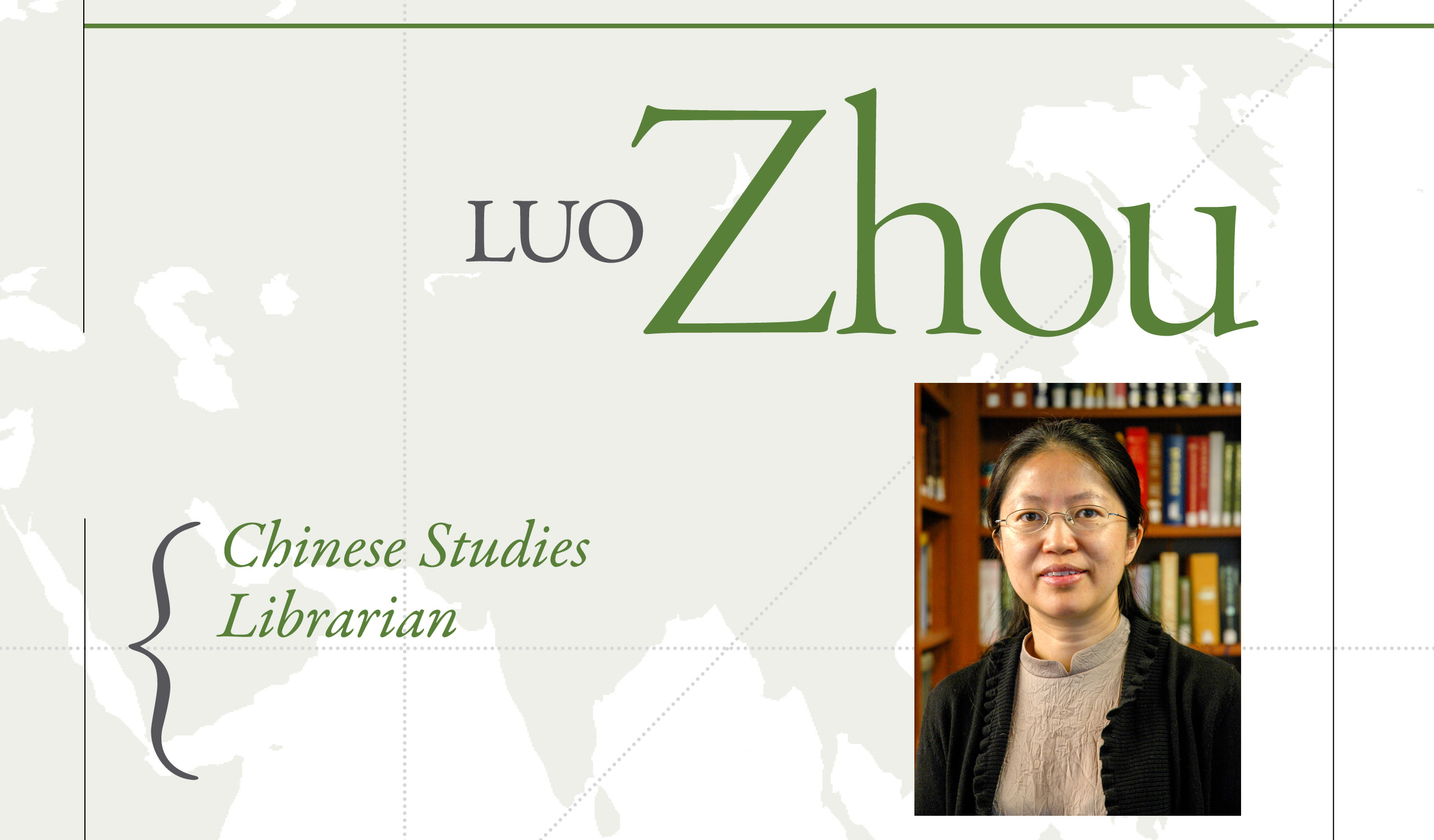
Over the last several years, Luo Zhou has been working closely with Chinese documentary filmmaker Wu Wenguang, one of the founding figures of Chinese independent documentary film. In 2010 Wu Wenguang launched the Memory Project to collect oral histories from survivors of the Great Famine (1958-1961), one of the most traumatic episodes in modern Chinese history. Between 20 and 43 million people died in what official Chinese histories call the “Three Years of Natural Disasters,” or “The Difficult Three-Year Period.”
Many young filmmakers have joined Wu Wenguang’s project. Since 2010 they have been to 246 villages in twenty provinces and interviewed more than 1,220 elderly villagers. In 2012, Luo and Duke professor Guo-Juin Hong arranged for Wu and three young filmmakers to visit Duke for a film screening of the Memory Project.
During his visit, Wu chose Duke’s Rubenstein Library as the repository for the raw footage of the project. Wu envisions Duke University Libraries as a safe home for these interviews to be preserved and shared with researchers around the world.
In 2015, Duke University Libraries received a $40,000 grant from the Council of East Asian Libraries of the Association for Asian Studies to support the processing of the Memory Project archives. The grant comes from the Innovation Grants for East Asian Librarians program, inaugurated in 2015 with funding from the Andrew W. Mellon Foundation. Library staff have already begun to arrange and describe this extensive collection of more than 1,000 interviews. Once the two-year project is complete, all of the oral histories will available through the Duke University Libraries website. As a pilot, fifty-one segments from the project have already been posted, along with Chinese transcripts of the films.
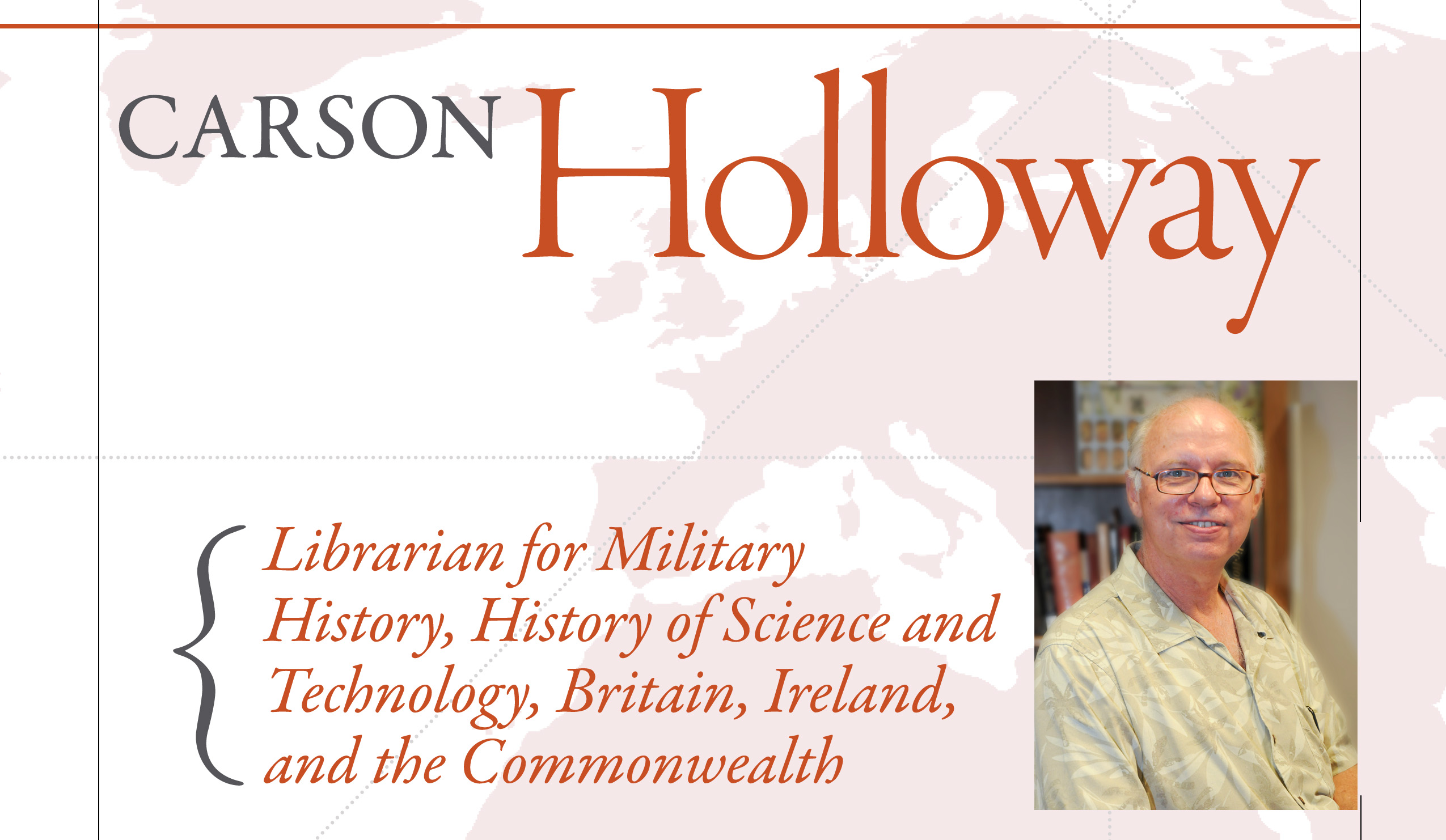
According to Carson Holloway, one of the pleasures of working in IAS is collaborating with students and faculty. A recent example is his work with Professor Karin Shapiro’s class on South Africa for a student-curated exhibit to be displayed in the Duke History Department next fall.
Carson got to know each class member as he worked with them individually on sources and approaches for their term projects. He was delighted to participate in a session to discuss the raw materials for an exhibit of South African documentary photographs.
Professor Shapiro enlisted the assistance of Lisa McCarty, curator of the Rubenstein Library’s Archive of Documentary Arts, as well as photographer and Center for Documentary Studies professor Alex Harris to help the group study possible images. Harris has edited two books of photography from South Africa in the closing days of apartheid. After a brief introduction to Duke’s collection of photography by South Africans, the class examined several groups of prints that Harris had been instrumental in bringing to Duke.
The class met late one winter afternoon in the freshly renovated Rubenstein Library to examine and discuss the images and their meanings. As they examined one large, crisp image after another, professors Harris and Shapiro answered questions and spoke about the difficulties of living in racially divided South Africa, and especially about the hazards of being a black documentary photographer during this period. The students were particularly engaged since they were traveling to South Africa as a group just a few days later.
For Carson, the chance to see, discuss, and be moved by the portrayal of apartheid by those who experienced it was a rare opportunity, made all the more enjoyable by collaborating with students on an exhibition.

After earning a bachelor’s degree from Ewha Womans University in Seoul, South Korea, Miree Ku pursued graduate study at Long Island University’s Palmer School of Library and Information Science, later receiving her master’s degree in Library and Information Studies from the University of North Carolina at Greensboro.
Since 2007, she has been the Korean Studies Librarian at Duke. In 2012, Duke’s Korean collection was selected as a member of the Korean Collections Consortium of North America (KCCNM), receiving a grant of $100,000 from the Korea Foundation. Miree is active in several professional organizations and has dedicated herself to leading initiatives designed to promote Korean studies in North America, serving as chair of the KCCNM and the Subcommittee on Korean Studies E-Resources. She is currently a chair of the Committee on Korean Materials of the Council on East Asian Librarians in North America.
The Duke University Libraries began building a Korean collection even before there was a Korean Studies program at Duke. In 1994, Carl Wesley Judy and his family, who were missionaries working in Korea, established an endowment to fund the collection of Korean materials.
Since the endowment’s beginning, a university program and dedicated faculty have come to Duke, with an increasing number of Korean students and researchers coming here. Although the program is still relatively small, it is the only one of its kind in the Southeast, making it a crucial representative for Korean Studies and culture in this part of the country.
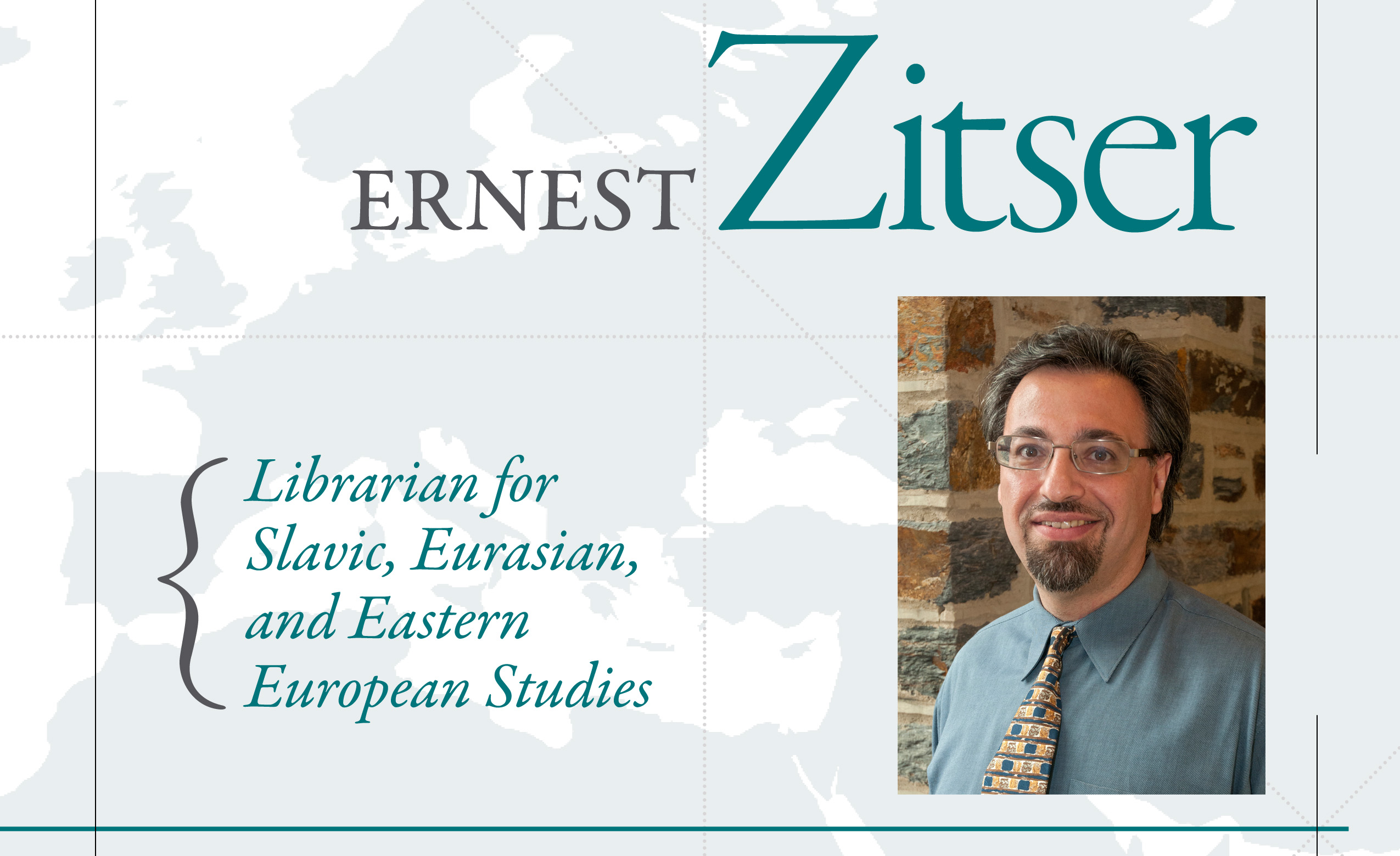
Duke has one of the largest and most extensive Slavic collections in the Southeast, and Ernest (Erik) Zitser works closely with Duke faculty as well as his library colleagues down the road at UNC to make sure that it stays so.
Since the late 1950s, Duke and UNC librarians have cooperated in building collections in the humanities and social sciences for Slavic, Eurasian, and East European area studies. Duke is responsible for building collections in the Polish and Ukrainian languages, while UNC is responsible for building collections in Czech and Slovak, Hungarian, Bosnian, Croatian, and Serbian. Both institutions collect Russian language materials broadly and are experimenting with cooperative collection development for Russian literature and literary criticism.
In addition to supporting the teaching and research of Slavic studies faculty at Duke, Erik has worked to make the Slavic holdings of the Rubenstein Rare Book & Manuscript Library better-known and more widely accessible. He has worked to digitize documentary photographs of early Soviet Russia from the Robert L. Eichelberger collection and, most recently, has spearheaded the digitization of the Russian Posters Collection, 1919–1989.
As an adjunct professor of the Slavic and Eurasian Studies department at Duke, Erik also carries out his own research in Russian literature and history. In 2011, he became the first librarian ever to be named a fellow at the National Humanities Center. He also founded ВИВЛIОθИКА (Vivliofika), an online, peer-reviewed, open-access journal of eighteenth-century Russian studies, hosted by the Duke University Libraries.

While he was conducting research in India, Edward Proctor learned about a monastery called Menri, which is devoted to Bön, the indigenous pre-Buddhist religion of Tibet. He was fascinated and decided to find the secluded place. After a three-day journey full of wrong turns and rough driving through the Himalayas, he arrived at a golden roofed monastery tucked among the mountains.
He remained less than a week, but that brief visit was enough to discover that scattered throughout the monastery were hundreds of manuscripts and block-print books dating back hundreds of years. They had been hidden in Northeast India by the monks during the Chinese Cultural Revolution (during which almost every Tibetan monastery was looted and burned). Edward realized that this was a truly unique collection of materials. But at the time he had no thoughts of how to preserve it, other than advising the monks about the general care and handling of manuscripts.
A few years later, Edward learned about the British Library’s Endangered Archives Programme, which provides funds to help preserve at-risk materials. He applied for and was awarded a pilot grant as a step towards digitization. With the aid of four monks, he spent two months at Menri conducting a survey of the monastery’s holdings and assessing the technical abilities and interests of the monks in carrying out the project. He then applied for a larger grant and was awarded funding to purchase digital photographic equipment and return to Menri for six months in 2015.
During his time in Menri, Edward and several monks digitized over 62,000 pages of manuscript text and almost 500 hand-painted initiation cards, illustrated with vibrantly-colored depictions of saints, deities, and symbols. The manuscripts covered a large range of material, from metaphysics and grammar to music. Many of documents were ritual texts detailing aspects of spiritual life, from cycles of prayers to instructions for elaborate ceremonies requiring hundreds of people to perform. While some of the manuscripts were in immaculate condition, others were heavily damaged, perhaps with the occasional spilled cup of butter tea. But these priceless documents are now preserved for future generations and scholars throughout the world.
Special thanks to Gwen Hawkes, T’16, Library Communications Assistant, for her contributions to this article.


One thought on “International and Area Studies Turns 25”
Comments are closed.